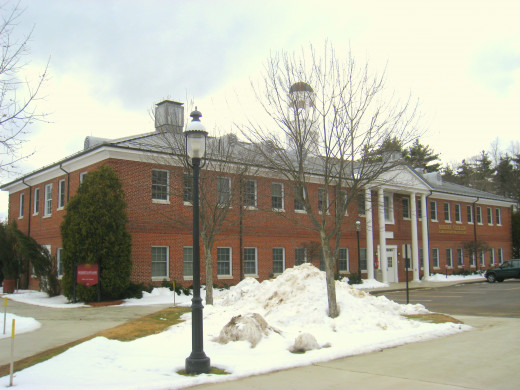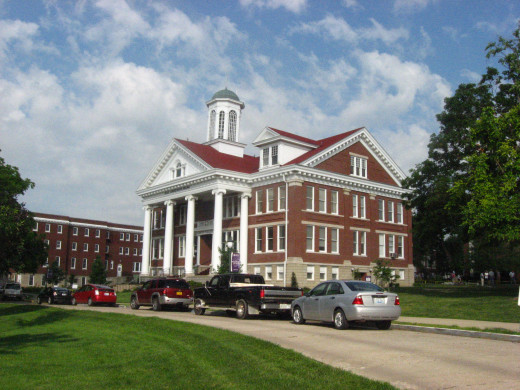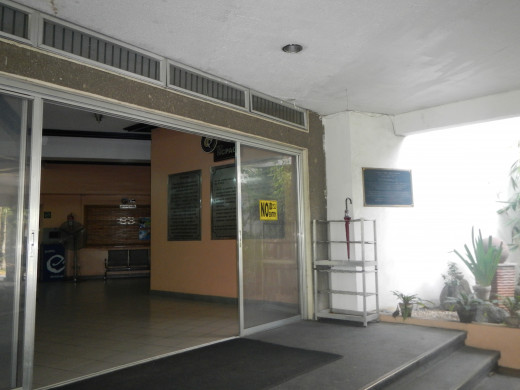Signs of Institutional Sickness
College Administration

Signs of Institutional Sickness
There are many visible and invisible signs of institutional sickness, a pathological condition that affects, like cancer, every facet of its operation, negatively impacting its overall mission as well as instructional integrity and efficiency. Although most institutions may suffer from one issue or another, a really sick institution suffers from any combination of the following issues, which has become an integral part of its negative “tradition.” Once such negative tradition is well-established as a norm, the inertia to maintain the status quo settles in, making it harder and harder to break away from it. The signs of sickness take many different forms as explained below.
Constant Administrative/Faculty Turnover
A sick institution has a high turnover rate at the top as well as at the bottom: its presidents, vice presidents, deans, department heads, faculty, and staff come and go, often unannounced, through a revolving door. Check how many top administrators have come and gone in your current institution in the past five years and then check how many faculty members you have worked with have departed for greener pastures in the past ten years. Often citing the “right to work” statute of a given state, such institution will not hesitate to fire anyone for no cause whatsoever. This kind of institution typically uses termination threats to all of its employees, openly and frequently, to exact the duties and responsibilities of each employees rather than allowing a good measure of democratic autonomy to accomplish many of its operational needs and tasks. Therefore, working there feels like working in a labor camp, imprisoned. Such schools will not renew the contract of any outspoken individual so as to maintain the Machiavellian rule of fear. In situations like this, many faculty and staff members feel how their own credentials and academic backgrounds are better than those of new academic administrators they have never heard of.
College Administration

Administrators with Little to No Academic Background
Another sign of a sick institution is the lacking academic credentials and preparation of its leaders. Leading countries like America is a complex job: an economist cannot be our President even under recession. Similarly to lead an institution, its top administrators should know the ins and outs of running an academic institution—usually working through the ranks in academia: department head, dean, vice president, and finally, the President. A sick institution will bring “industry leaders,” code words for business people with no academic credentials; not having had any academic preparation, these top leaders will superimpose their iron-will Total Quality Management (TQM), trying to transform a university into a Toyota factory, through largely cutting budget and eliminating positions. For such earth-shattering “leadership,” a school can hire a manager from a local fast food joint as he or she will be much cheaper and as effective. Their background has been in making profit—at all cost—and never educating our students. Of course, such blinding for-profit paradigm does not work in academia for long; as a result, the hotshot new president will soon be deposed by yet another industry leader. And the charade goes on. But such frequent replacements of the top administrators rob the school of any consistency in policies and programs; therefore, the school lacks any sense of overall cohesiveness or integrity as it falls apart at seams.
Micromanagement Par Excellence
One of the first signs of institutional sickness manifests itself in suffocating micromanagement, an alarming proof of dictatorial or autocratic governance. Due to high turnover in the leadership positions as well as the fact that these leaders lack any academic background or preparation, top administrators are under constant pressure to “produce” and “show” the hard evidence of their achievements as they rely on “result-driven” management style—never realizing that an institution is not a sweatshop in Bangladesh. This situation means they want to control and slave-drive every facet of the process involved in their factory of education: from budgeting to faculty evaluation to program cut. Nearly all the presidential candidates vow and lip service, during a campus interview, that they will exercise shared-governance based on teamwork and consultation; however, once they are on the job for a year, they soon realize such democratic ideal does not work when dealing with contentious faculty and staff. Some would even go so far as to say that “faculty input” is an oxymoron, unable to institute or implement his or her mandates, never realizing the cold fact that academe is not an industrial assembly line. Such administrators in private schools will monitor and censor all incoming and outgoing electronic messages just as KGB would as such activity is allowed by law.
Administration

Slavery Through Incompatible Salary
A sick institution will offer an academic minimum wage to enslave its gullible employees or replace full-time faculty and staff with adjuncts and temporary workers in the name of “cost cutting” or “reduction in force.” They will never show individual salaries voluntarily. Wanting to keep the employees in the dark, it often refuses to report its pay scale, for example, in Integrated Postsecondary Educational Statistics (IPEDS)—for fear that such exposé will cause uproar among the ranks of its employees. They want to maintain the secrecy as long as they can get away with it. But eventually you will find out how someone with no terminal degree is making far more than you do thanks largely to nepotism, or religious, gender, ethnic, racial, political, regional, and other affiliations. Certainly you can sue them, but even if you win the case, you will have to either find another place to work or find the current institution too hot to continuously work for—granted you have thoroughly documented the case with lots of witnesses. This fact the administrators are too well aware of.
Lack of Transparency
As explained above, a sick institution mushrooms under the darkness of secrecy. A glaring example of secrecy is illegal hiring practice. At the first meeting of your Fall Faculty Institute, for example, you will meet your new colleague, Department Head, Dean, or Vice President for Academic Affairs—for the first time ever. No, there was no search committee, much less a deliberation as to which candidate is better qualified for what position. You were not even aware of the vacancy? Well, that seems to be your problem, and not theirs. The central administrators have already made the decision for you because they knew better as they “run the school.” At times, to avoid litigation, they will also go through a fake search, in which the best candidates are carefully avoided so that they can pick and choose the one candidate they have already picked behind the closed doors.
College Administration

Declining Student Enrollment and Low Retention/Graduation Rates
Declining student enrollment, coupled with low retention and graduation rates, is yet another sign of a sick institution. Due to high faculty turnover and low faculty morale, the retention and graduation rates at this institution tend to suffer as these factors hinder consistency in maintaining academic policies and programs. A few graduates will transmit such negative messages to others, offering a powerful firsthand report on what is really going on at this school. Such negative publicity will, in turn, impact deleteriously on recruitment, further reducing enrollment. Eventually, the school will experience negative “name-branding,” as the public recognizes its pathological condition, which will ultimately lead to loss of accreditation.
Religious and Other Coercions
Nearly all the symptoms of institutional sickness appear more often at poorly-run private schools than in public ones. Typically, the latter retains more robust checks and balances demanded on public schools. But private institutions, especially religious ones, tend to show more symptoms of sickness than the latter. For example, the real hidden missions of most private religious schools is evangelizing and converting their students to their mold, and not necessarily educating or empowering students so that they can make independent decisions regarding matters of religion for themselves. If a private school wants you to write a statement of faith as part of your job application, you must accept the fact that this school will likely to require you to attend regular religious services every week as part of your employment there. Worse, such institutions may ask your religious conversion as part of your tenure requirements. Forget academic freedom in such schools. Now one may ask there is nothing wrong for a religious school to demand such coercion and conversion, claiming how such religion is part of its mission, and therefore there is nothing “sick” about it. The problem is nearly all such schools take advantage of taxpayer’s money in the form of student financial aids, the tax money collected by people in all walks of life, believers or non-believers alike. To use such financial aids as a means of inculcating one particular branch of religion appears to fly against the seeming separation of church and state in America. Such schools also argue that if you do not believe in their version of religion, you have no right to work there. Not so fast. Using the same logic then, all public schools should refuse to hire the followers of this particular belief system, given that all public schools are secular—they have no business of working there, either. That has not been the case, however, and therein lie the inherent self-contradiction and sickness.
Administration

Disappearing Fund and Inconsistent Policies
In sick institutions, faculty development fund is usually the first to go under financial duress. In a healthy institution, the school will help pay faculty memberships in professional organizations because it values research and scholarship of individual faculty members, not to mention all the travel and incidentals resulting from participating in national and international conferences. A sick institution will transfer funds from one jar to another on a contingency basis as it lacks fiscal integrity. Therefore, there will be faculty development fund one year, but not in the next. Similarly, a sick institution will have inconsistent policies, for example, on tenure, among others: in one year, they will put tenure on hold under the pretext of “financial exigency,” a cure-all code word to deal with any unpleasant dealings with faculty and staff. And then a few years later, they will resume the tenure process, arbitrarily. In short, a sick institution lacks due process, both procedural and substantive.
Stress and Incompetence Through Lack of Communication Among Departments
Another sign of institutional sickness is the lack of interdepartmental communication, causing a rather stressful working environment all around. Running a large institution itself is complex enough and will have occasional communication breakdown even under ideal circumstance. However, in a sick institution, each department will withhold its information, not wanting to share with others outside the department, for such sharing might threaten the very survival of the department. For example, when your department is losing enrollment, therefore it will soon be on the chopping block, why should you share this information with the person holding the ax? Therefore the protection of one’s own turf becomes priority rather than sharing the information and data for the well-being of the institution.
Administration

Culture of Blaming Others
In the above scenario, regarding a department that is losing its enrollment, people can blame others for the problem of losing students; for example, the department head can argue how the school reduced the budget necessary for revamping the recruitment efforts. Others in the department can also argue how the university recruiters are under-qualified or incompetent while the real problem is their inability to engage students once enrolled in the program. Or they themselves have never done any recruiting although they knew about the declining enrollment for many years. In short, in a sick institution, people do not want to own up their responsibilities while blaming others for their own problems. Such distancing is common in a sick institution.








